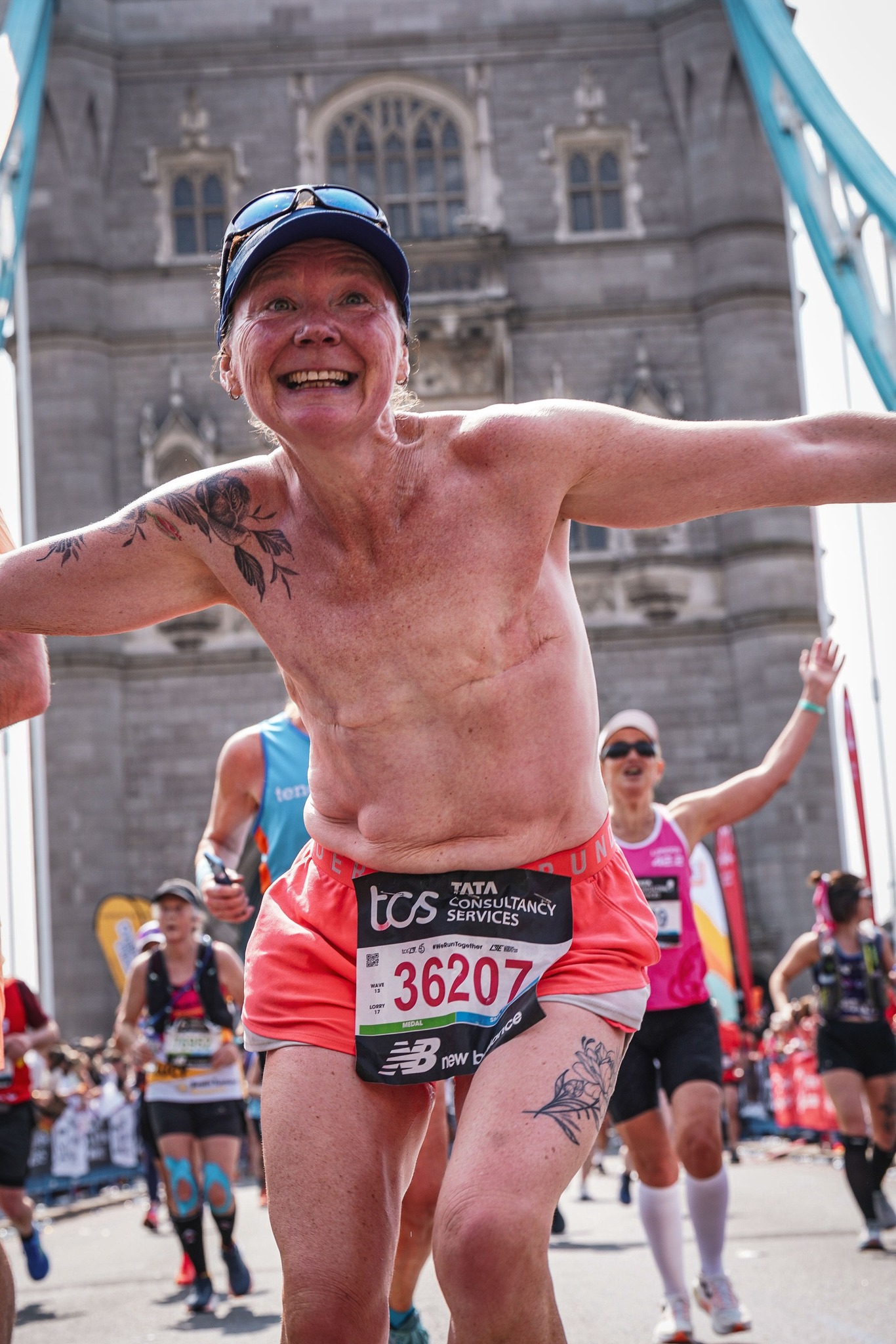.jpg)
When Louise Bernadette Butcher discovered she had lobular breast cancer in April 2022, it wasn’t just a shock—it was the start of a journey that would up-end her life, her body image and ultimately reshape her mission.
Louise, a mother of two living in Braunton, Devon, had recently had a clear private mammogram—only to find a “tiny little lumpy piece” during a self-check shortly afterwards. That led to an ultrasound and biopsies, and then the news: cancer. She underwent a double mastectomy—the second surgery coming soon after the first. While many women in her position are encouraged to opt for reconstructive surgery, Louise made a different choice. She chose a flat closure, rejecting implants and the well-intentioned but heavy push to “look normal” again.
In her own reflections, she said the loss of her breasts was devastating—but necessary. More than that, she realised that hiding them away would only sustain the stigma she was about to fight. She began running within weeks of surgery: walking briskly within days, running within two. Running became more than exercise—it became a lifeline.
Before diagnosis Louise had already been training—six months prior, she was gearing up for the 26.2-mile output of the London Marathon. After surgery she completed that marathon (virtually) just weeks later. And then she set her sights higher. (Image source: Louise Bernadette Boucher, Facebook)

In April 2024 she made headlines by running the London Marathon topless, her mastectomy scars visible, her top gone, her bib pinned across her torso. The aim was clear: to normalise flat-closure mastectomy bodies, to challenge the idea that a woman needs breasts (or implants) to be feminine, whole or athletic. She trains topless around the North Devon coast, jogging past local residents who have grown comfortable with the sight.
Louise has said running gave her back a sense of purpose, helped her heal physically, and rescued her mental health. She noticed that when people feel pity, it diminishes you; but when you are running a marathon, pity falls away—what remains is strength. She wants to show that after cancer you can carry on, you can be someone new, someone strong.
Her activism centres on two linked causes: one, awareness of lobular breast cancer (a type less likely to show up on routine mammograms) and two, destigmatising the decision not to reconstruct. She uses her social-media platforms to post, share, run and talk openly about scarring, body image and women's choices. She’s also fundraising actively for breast-cancer charities, aligning her runs with donations.
Louise often says: “These scars saved my life — why would I hide them?” She’s turned that sentiment into a public act of defiance and visibility. She wants women to know: you do not have to fit the mould of reconstruction; the most important thing is survival, then living on your own terms.
Not everyone has applauded her approach. Some critics argue that running topless invites sensationalism, or that it puts public bodies (racers, children, spectators) in an awkward space. Others say that by making such a visible statement about what a body should be after mastectomy, she might unintentionally make women who do choose reconstruction feel judged or “less authentic”.
Louise acknowledges the mixed reaction: she estimates about 70-80 per cent of responses are positive, but the remainder, she says, are just as valuable because they open conversation. She has asked: why is it acceptable for a man to run bare-chested, but a woman without breasts still unsettles people? She wants to stir the discomfort so that it becomes dialogue.
It may sound odd, but Louise has said that she feels more feminine now than before. Her rationale: femininity is not about body parts, it’s about confidence, self-ownership and strength. Before cancer she didn’t really care how she looked. After cancer she cares only that her body is hers, that it works, that it runs and breathes.
Running topless, she says, is freeing. The breeze on her bare chest, the absence of bouncing tissue, the visibility of what’s real—these all feed into her message: bodies survive, bodies adapt, bodies run on.
Louise is determined to keep running, keep speaking and keep pushing for acceptance. She’s planning more events, more appearances, and possibly a book to document her experience. She wants women everywhere, whether they choose reconstruction or not, to know that the narrative after breast cancer doesn’t have to be “put it back and move on”. It can be “here I am, in this body, still living, still running, still visible”.
She has become a symbol of resilience precisely because she refused to stay silent about her scars. She turned what many see as absence into presence. She made her lack of breasts into power.
Louise’s story challenges us. It asks: what do we expect of women’s bodies after illness? What do we expect of survivors? And perhaps, most importantly: when do we stop avoiding the sight of survival in its rawest form?
.jpg)
.jpg)
.jpg)
-2.jpg)
.jpg)
.jpg)
-2.jpg)
.jpg)
.jpg)

.jpg)